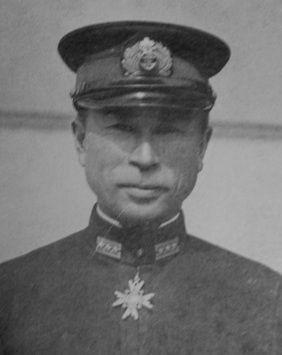Kamikaze






Kamikaze (神風, literally "divine wind") refers to a military tactic employed by the Japanese Empire during World War II, where pilots conducted suicide attacks, crashing their aircraft loaded with explosives into enemy ships. The practice aimed to inflict maximum damage on enemy naval vessels, particularly aircraft carriers and battleships, which were critical to the United States Navy's Pacific operations. The term "kamikaze" was inspired by the "divine wind" (also called "kamikaze") typhoons that historically protected Japan by destroying Mongol invasion fleets in the 13th century.
Origins and Implementation[edit]
The kamikaze tactic was officially adopted by the Japanese military in 1944 as the situation in the Pacific Theater became increasingly desperate for Japan. The decision to employ suicide attacks reflected the dire circumstances faced by Japan, including shortages of aircraft, pilots, and fuel, as well as the overwhelming industrial and military might of the Allies. Kamikaze missions were seen as a way to level the playing field, using the pilots' lives as the ultimate weapon against superior enemy forces.
Training and Execution[edit]
Kamikaze pilots, often young men motivated by a sense of duty, loyalty to the Emperor, and the samurai spirit, underwent brief and intense training periods. They were celebrated as heroes in Japan, with their sacrifices glorified as noble acts of patriotism. Before their missions, pilots would often participate in ceremonial preparations, including donning a hachimaki (headband) with patriotic slogans, drinking a ceremonial cup of sake, and writing a final letter or poem to their families.
The execution of kamikaze attacks involved pilots flying their aircraft, often modified to carry maximum explosives and with minimal fuel to reach their target but not return, into enemy ships. The primary targets were aircraft carriers, due to their critical role in projecting air power, but battleships, cruisers, and destroyers were also targeted.
Impact[edit]
The impact of kamikaze attacks on the outcome of World War II is a subject of debate among historians. While these attacks did inflict significant damage on U.S. naval vessels, sinking or damaging dozens of ships and killing or wounding thousands of sailors, they did not alter the course of the war. The industrial capacity of the United States allowed for rapid repairs and replacement of lost ships and personnel, while Japan's resources continued to dwindle.
Legacy[edit]
The legacy of the kamikaze pilots is complex. In Japan, they are often remembered as national heroes who made the ultimate sacrifice for their country. Memorials and museums, such as the Yasukuni Shrine and the Chiran Peace Museum for Kamikaze Pilots, honor their memory. Internationally, the kamikaze tactic is frequently cited as an example of fanaticism and desperation in warfare, raising ethical questions about the use of suicide attacks in military conflicts.
Ad. Transform your life with W8MD's Budget GLP-1 injections from $75


W8MD offers a medical weight loss program to lose weight in Philadelphia. Our physician-supervised medical weight loss provides:
- Weight loss injections in NYC (generic and brand names):
- Zepbound / Mounjaro, Wegovy / Ozempic, Saxenda
- Most insurances accepted or discounted self-pay rates. We will obtain insurance prior authorizations if needed.
- Generic GLP1 weight loss injections from $75 for the starting dose.
- Also offer prescription weight loss medications including Phentermine, Qsymia, Diethylpropion, Contrave etc.
NYC weight loss doctor appointmentsNYC weight loss doctor appointments
Start your NYC weight loss journey today at our NYC medical weight loss and Philadelphia medical weight loss clinics.
- Call 718-946-5500 to lose weight in NYC or for medical weight loss in Philadelphia 215-676-2334.
- Tags:NYC medical weight loss, Philadelphia lose weight Zepbound NYC, Budget GLP1 weight loss injections, Wegovy Philadelphia, Wegovy NYC, Philadelphia medical weight loss, Brookly weight loss and Wegovy NYC
|
WikiMD's Wellness Encyclopedia |
| Let Food Be Thy Medicine Medicine Thy Food - Hippocrates |
Medical Disclaimer: WikiMD is not a substitute for professional medical advice. The information on WikiMD is provided as an information resource only, may be incorrect, outdated or misleading, and is not to be used or relied on for any diagnostic or treatment purposes. Please consult your health care provider before making any healthcare decisions or for guidance about a specific medical condition. WikiMD expressly disclaims responsibility, and shall have no liability, for any damages, loss, injury, or liability whatsoever suffered as a result of your reliance on the information contained in this site. By visiting this site you agree to the foregoing terms and conditions, which may from time to time be changed or supplemented by WikiMD. If you do not agree to the foregoing terms and conditions, you should not enter or use this site. See full disclaimer.
Credits:Most images are courtesy of Wikimedia commons, and templates, categories Wikipedia, licensed under CC BY SA or similar.
Translate this page: - East Asian
中文,
日本,
한국어,
South Asian
हिन्दी,
தமிழ்,
తెలుగు,
Urdu,
ಕನ್ನಡ,
Southeast Asian
Indonesian,
Vietnamese,
Thai,
မြန်မာဘာသာ,
বাংলা
European
español,
Deutsch,
français,
Greek,
português do Brasil,
polski,
română,
русский,
Nederlands,
norsk,
svenska,
suomi,
Italian
Middle Eastern & African
عربى,
Turkish,
Persian,
Hebrew,
Afrikaans,
isiZulu,
Kiswahili,
Other
Bulgarian,
Hungarian,
Czech,
Swedish,
മലയാളം,
मराठी,
ਪੰਜਾਬੀ,
ગુજરાતી,
Portuguese,
Ukrainian
